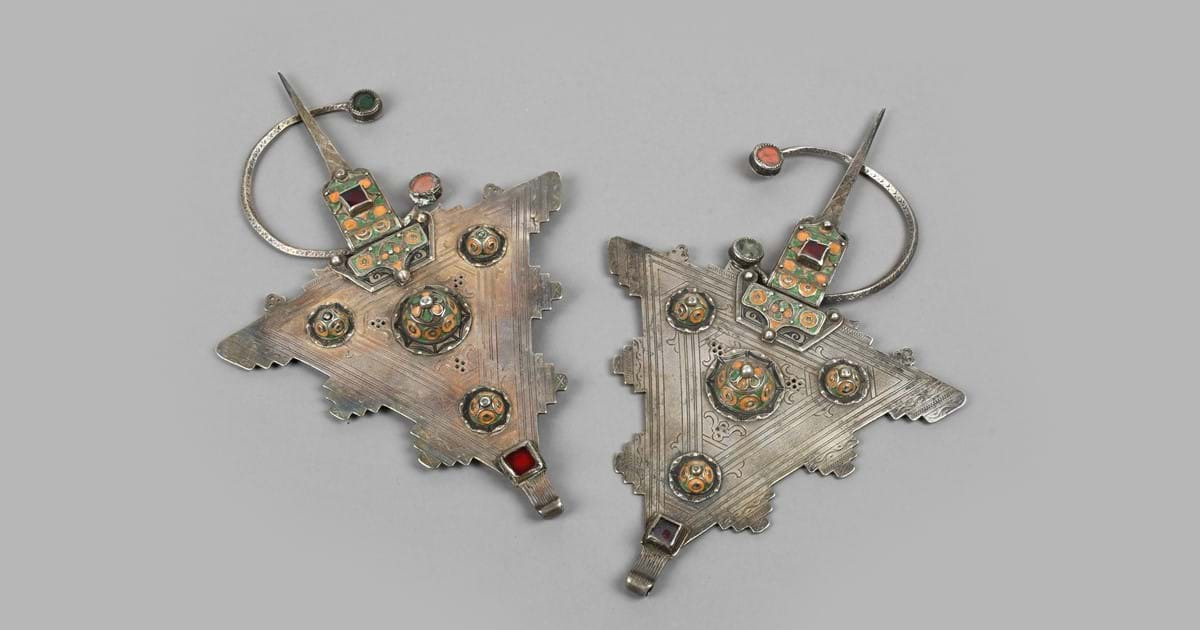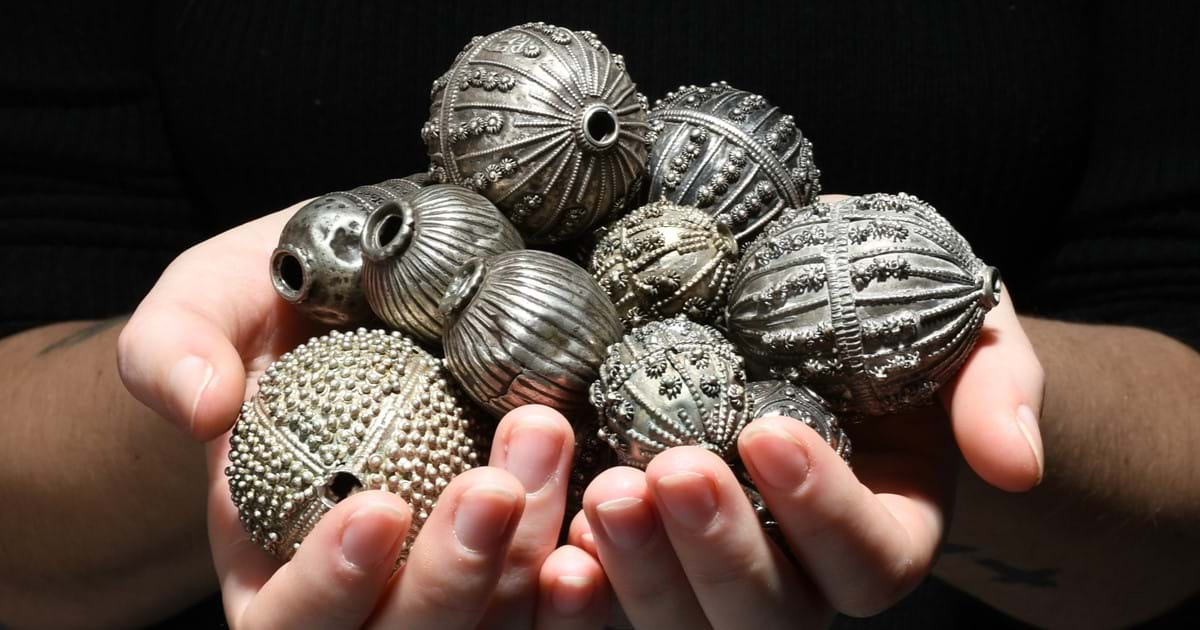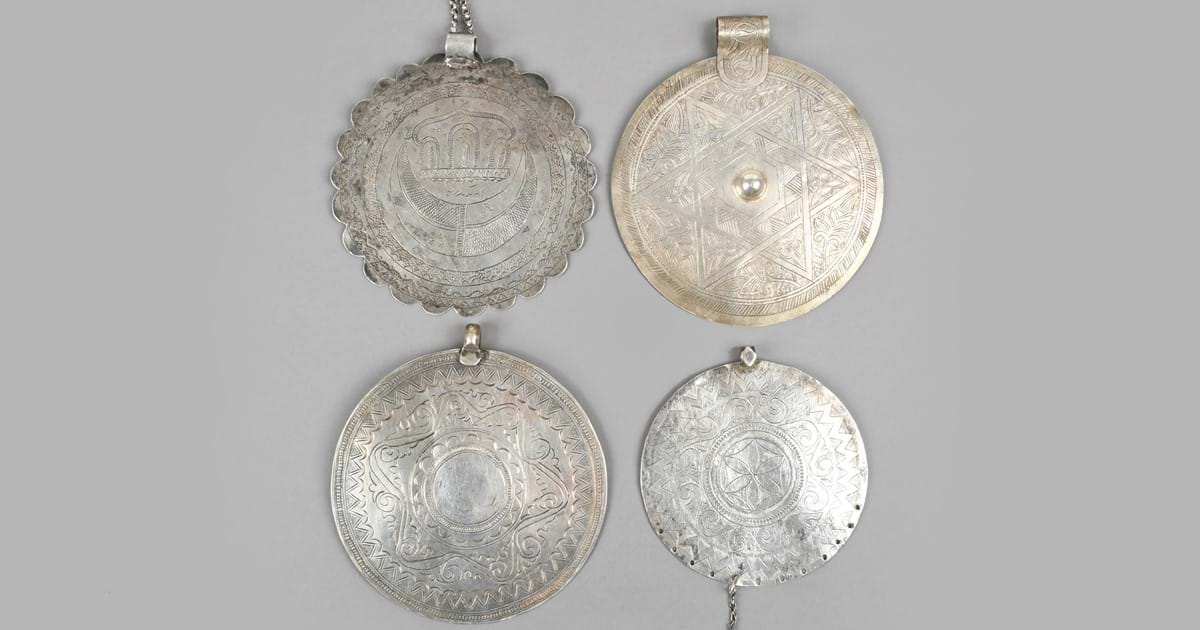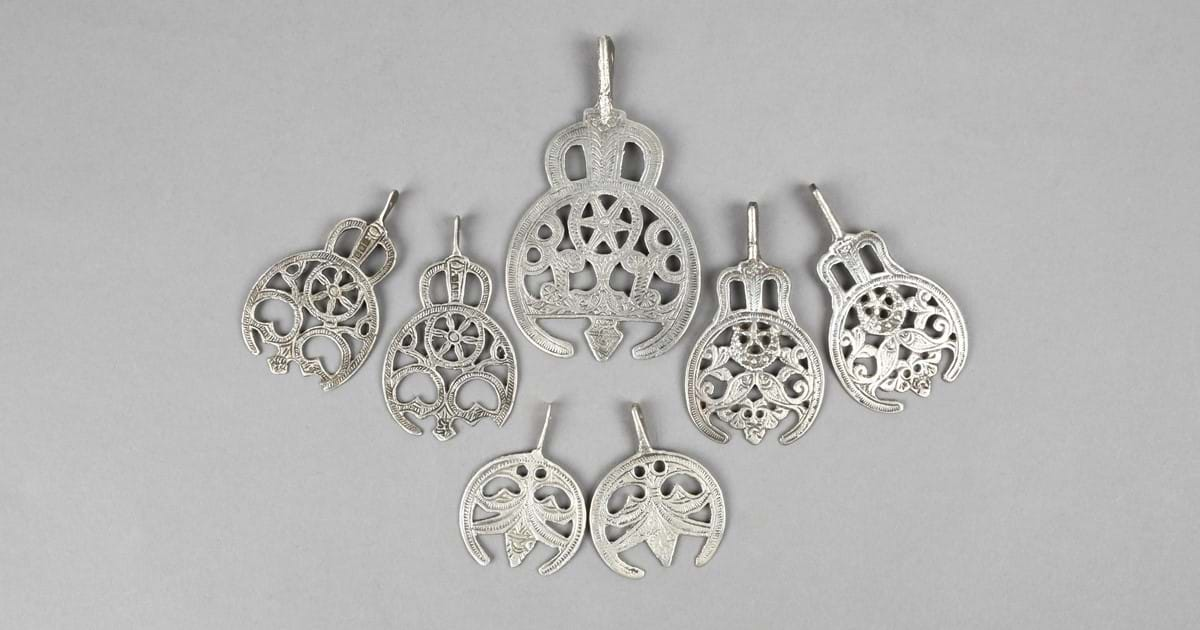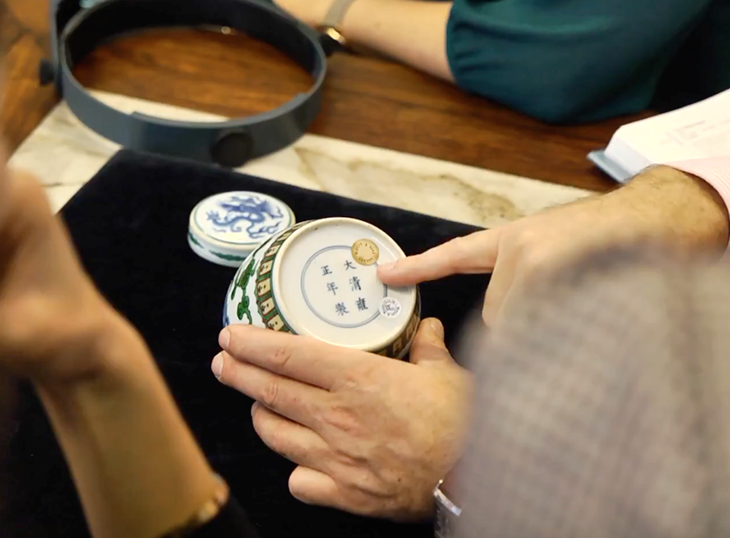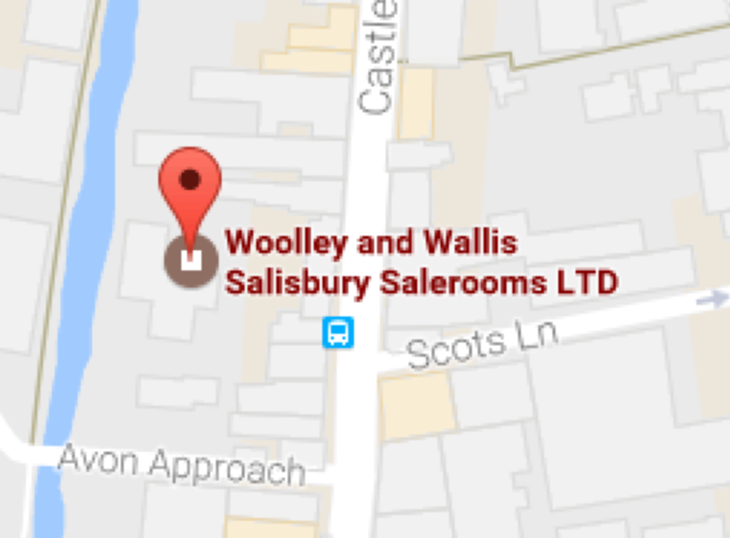Statement and Symbolism
10th February 2020The term ‘Tribal Jewellery’ may, for many, conjure up images of countless metal coils stretching a human neck to seemingly impossible heights, or wide hoops extending an ear lobe to shoulder length, and yet a rare private collection being sold in Salisbury shows that such pieces are not only highly wearable they are also very affordable.
The collection of Professor Doris Abouseif includes a number of silver and silver-coloured metal pieces from across North Africa, with objects made in Egypt, Morocco, Libya and the Yemen, among others. Nubian cuff bracelets with bold geometric designs, Bedouin pendants with suspended bead tassels, and Ottoman necklaces hung with coins and small pendants sit alongside collections of Yemeni beads, Egyptian earrings and Libyan crescent (or hilal) pendants.
“These pieces are everyday jewellery,” explains Will Hobbs, Tribal Art specialist at Woolley and Wallis, where the collection is being sold. “They have been collected by Professor Abouseif over a period of 20 to 30 years and are fantastic examples of some of the craftsmanship that continues to come out of these parts of Africa.”
While many of the pieces are intended purely for decoration, some have a deeper significance. Hobbs continues, “Hirz pendants are much like a larger version of the Western locket and are designed to contain or conceal other small items. The beading and tasselling on many of the necklaces was intended to ward off evil and protect the wearer. While circular adrim charms from the Siwa oasis can indicate, by the way they are worn, the married status of the wearer.”
The collection is being sold in around 50 lots as part of Woolley and Wallis’s Tribal Art and Antiquities auction on 19th February, with estimates starting from £100.
“It is very rare to see a collection of this type in the UK,” says Hobbs, “and it offers an ideal chance for collectors to introduce themselves to this fabulous type of craftsmanship. Modern jewellery designers are charging high retail prices to emulate this type of object, but there are still active makers in North Africa whose work deserves to be recognised.”
To view the collection click here.

